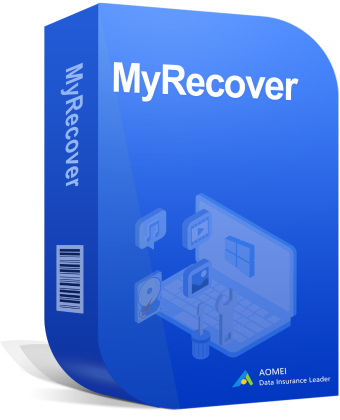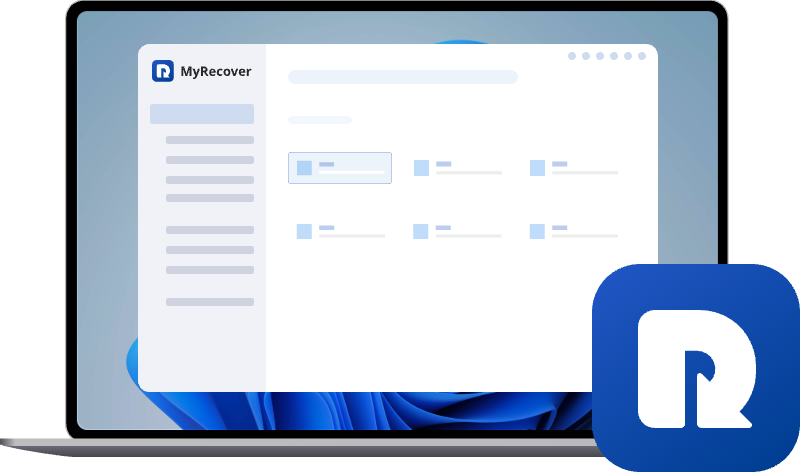What is an I/O Device Error & How to Fix it Easily on USB, SD Card, Etc
An I/O Device Error can occur on USB drives, SD cards, hard drives, and other external or internal storage devices, preventing access or causing read/write failures. This article explains common causes of IO Device Errors, including hardware issues, driver problems, or initialization errors, and provides simple and effective methods to fix I/O errors on HDDs, USBs, SD cards, and more.
Meet an I/O device error When Initializing Hard drive
Hello,when I try to "initialize"my second Hard drive - a pop-up says: the request could not be completed because of an i/o device error.I have Windows 10and the hard drive that isn"t initializing, is new and didn"t have anything on it - and just put in.I really need this fixed asap, so I can start using the extra space the hard-drive will give me.Has anyone ever seen or had this problem before?
Your help is much appreciated. Thank you.
What Does I/O Error Mean?
What is an I/O Device error? It stands for "Input/Output Error". It happens when your computer cannot read from or write to a storage device properly. In simple terms, it means your computer is having trouble communicating with your hard drive, USB drive, SD card, or other storage device. Or you can understand it this way! The I/O Error is just your computer saying: " I’m having trouble reading or writing data on this device."
Why Does I/O Error Happen?
Now that you understand what an I/O Error is, you might wonder why it happens. There are several common reasons why your computer cannot read from or write to a device properly:
1. Hardware Problems: The storage device (hard drive, USB, SD card) might be damaged or not connected properly.
2. Driver Issues: The software that helps your computer talk to the device (called a driver) might be missing, outdated, or broken.
3. File System Errors: The device's file system could be corrupted, making it hard for the computer to read data.
4. Connection Problems: Loose USB ports, bad cables, or damaged connectors can stop data from transferring.
How to Fix an I/O Device Error on HDDs, SD Cards, USB Drives, and More?
If you see an I/O Device Errorand cannot access it successfully, don’t panic. It can be fixed with a few simple methods:
Solution 1. Restart your computer
A simple restart can sometimes refresh the system and fix temporary I/O issues.
Solution 2. Unplug the Device and Plug it Back In
Sometimes, the connection between your computer and the storage device is not stable. Simply removing the device safely and then plugging it back in can refresh the connection and solve temporary errors.
Solution 3. Try a Different USB Port or Cable
A faulty USB port or damaged cable may cause your computer to lose communication with the device. If you plug the device into another USB port on your computer or switch to a new cable, you can check whether the error is caused by the hardware connection.
Solution 4. Connect to Another Computer
If the I/O device error happens on an external hard drive, connect it to another computer to see if the error still happens. It helps you identify whether the problem comes from the device itself or from your computer. If the drive works fine on another computer, the issue may be with your original computer’s USB port, drivers, or system settings. But if the error appears on both computers, it’s likely that the drive has a problem.
Solution 5. Update or reinstall the driver
If it is the outdated disk driver that leads to I/O device error, you can try to update or reinstall the driver.
Press "Windows + X" and choose "Device Manager". Find your device under Disk drives. Right-click it and choose "Update driver".
If updating doesn’t work, you can uninstall the driver and restart your PC. Windows will reinstall it automatically.
Additionally, you can reset the USB controllers if the I/O device error occurs on USB devices:
In Device Manager, expand "Universal Serial Bus controllers". Right-click each controller, choose "Uninstall device", and then restart your computer. This forces Windows to reinstall the USB controllers, which can help fix I/O errors caused by USB connection issues.
Solution 6. Run Windows Error Checking tool
One of the easiest ways to fix an I/O Device Error is to use the built-in Windows Error Checking tool. This feature can automatically scan your drive and repair common file system errors that may be causing the I/O problem.
Step 1. Open File Explorer. Right-click the drive that shows the error and choose "Properties".
Step 2. Go to "Tools" under Error checking click "Check".
Step 3. Let Windows scan and fix file system errors.
Solution 7. Run CHKDSK Tool
If the built-in Windows Error Checking tool cannot fix your I/O Device Error, you can use the CHKDSK command for a deeper, more thorough repair. Although both of them ultimately call chkdsk.exe under the hood, CHKDSK is more suitable for advanced users or when dealing with complex issues such as bad sectors, logical errors, or inaccessible drives.
Step 1. Press "Windows + S", type cmd, right-click "Command Prompt", and choose "Run as administrator".
Step 2. Type the command: chkdsk g: /f /r (Replace g with the drive letter of your device.)
Step 3. Press Enter and wait for CHKDSK to scan and repair the drive.
Solution 8. Force Clean / Initialize the Disk via DiskPart
If the above methods I/O Device fixes are unable to fully resolve the Error, or the disk is still inaccessible, you can try using DiskPart to force clean and initialize the drive. It allows you to reset the disk at a low level, which can fix severe logical errors or prepare a problematic disk for reformatting.
Step 1. Open Command Prompt as administator.
Step 2. In the Command Prompt, type "diskpart" and hit on "Enter" to launch DiskPart tool
Step 3. Then in the new windows, run the following commands in sequence and press Enter after each one:
- list disk: display all connected drives listed with numbers. Identify the disk that shows the I/O error.
- select disk X: replace X with the disk number of your device with I/O device error.)
- clean: remove all partitions and data on the disk
- convert mbr: initialize the disk as MBR. (If you want to initialize it as GPT, use convert gpt)
- create partition primary
- format fs=ntfs quick
Professional Data Recovery Tip [If Necessary]
After using DiskPart to clean and initialize a disk, all data on the drive is permanently erased, making it inaccessible through normal Windows operations. This is fine if the disk is new and contains no important data. However, if the disk has been in use for a long time and holds valuable files, what you can do to recover them? In this case, you can rely on professional data recovery software like MyRecover.

- Supports 500+ Storage Devices – including SSDs, HDDs, USB flash drives, SD cards, and more.
- Recovers 1000+ File Types – such as PNG, MP4, MP3, TXT, ZIP, MSG, and many others.
- Handles 500+ Data Loss Scenarios – covering accidental deletion, formatting, system crashes, virus attacks, and more.
Step 1. Install and launch MyRecover on a different drive. Select the cleaned or formatted disk and click "Scan".
Step 2. Check the found files and click "Recover". If you want, you can preview them before recovery.
Step 3. Restore them to a safe location.
Summary
An "I/O Device Error"occurs when your computer cannot properly read from or write to a storage device. It can be caused by hardware issues, driver problems, file system errors, or connection faults. To fix it, try the above methods.
If important data is lost during advanced repairs like CHKDSK error checking, DiskPart initialization or formatting, professional recovery tools such as MyRecover can help restore lost files from the initialized disk, formatted drive, corrupted disk or even unbootable computers.


